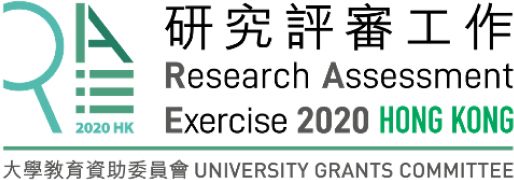Case Study
Miaoxia Village – building a sustainable community
1. Summary of the impact
Our collaborative research on environmental, economic and socially sustainable design has helped one hollowed-out, left behind rural community in China achieve greater community cohesion and resilience. Working closely with the residents, PolyU’s cross-disciplinary research created a Community Kitchen and Guesthouse helping villagers learn new skills, diversify income sources, and self-organise. Within this RAE period through these 2 projects over HK$96k of new income has been generated, supporting community education and healthcare for all 150 villagers. This project’s success has led to further rural community revitalization projects in 9 other villages, bringing social and economic benefits to over 2000 villagers.
2. Underpinning research
Rural development is a major Chinese government concern as so many rural villages are impoverished. Over 30 years, the rural population has fallen from 82% to 47%. The percentage of elderly and left behind children has doubled. These challenges motivated a PolyU project to create sustainable rural communities. Sichuan’s Miaoxia village emerged as an ideal partner for a cross-disciplinary, action research, participatory design project which could be a test case for further rural village interventions. The project addresses both economic and social problems by developing sustainable alternative income streams and through building mechanisms to improve cohesion in the socially fragmented village.
This project initiated by Professors Hasdell and Ku, is a Keswick Foundation funded collaboration between the School of Design as an Insitu project venture (Insitu is a research group led by Peter Hasdell, involving other School of Design collaborators) and the Department of Applied Social Sciences. Secondary collaborators include Lvgeng (an NGO that has created a social workers network), the China Research and Development Network (CRDN), and Sichuan Agricultural College. Commencing November 2015, the collaboration completed the Community Kitchen Project (November 2016), a Community Guesthouse and community septic tank (December 2017), a community garden, a public square and an orchard fed by treated waste (2018) [1]. The projects involved over 25 visits for periods between 3-4 days to 4 months over 4.5 years.
The outcomes, combining both on site projects and research outputs, are two-fold. Firstly; the development of a dual methodological approach to sustainable rural development combining action research and participatory design. This Social Design and Social Innovation methodology empowers design as agency geared towards sustainable change [2, 3]. Secondly, Miaoxia’s applied sustainable rural development ‘prototypes’ (e.g. the community kitchen, community septic tank etc.) offer reproducible proof-of-concept models with testable research validity generating feedback that can underpin further real-world sustainable development approaches [4].
This dual methodology approach used action research ‘software’ for social engagement, and participatory design ‘hardware’ in creating the community facilities. The hypothesis is that design and social sciences are complementary disciplines working towards the sustainable rural community revitalization. Guided by initial needs analysis and asset-mapping, the project prototypes were carefully aligned with the beneficiaries’ requirements. Crucially, embedded researchers facilitated and negotiated outcomes as well as monitored, recorded and learned from villager’s responses. This integrated social design approach entailed developing new social/cooperative enterprises and collective benefit schemes to distribute income and support the community in tandem with building the ‘prototypes’ resulting in alignment and social capital ownership throughout the changes to the village.
Co-design of the facilities through regular negotiations with villagers ensured engagement with relevant social, cultural, economic and environmental factors. The villagers’ participation in every aspect was essential to the projects’ success. Workshops and training sessions utilising local knowledge, expertise and customs, allowed multi-direction knowledge transfer and proved invaluable for effective prototype implementation. The resulting co-designed, built and run community kitchen and a community guesthouse inspired the further step by step integration of a communal waste system, two public spaces and a community garden. On-going monitoring of the projects continues.
3. References to the research
[1] Hasdell, P, Miaoxia Village – building a sustainable community, 2015-2019. Body of work submitted as non-traditional output to RAE 2020. http://ira.lib.polyu.edu.hk/handle/10397/81396
[2] Hasdell, P.; “Activating Design Social,” pp152-171, Cubic Journal, Issue 1, 2018, JAAP Sam Publishers Amsterdam. DOI:10.31182/cubic.2018.1.009 (Double blind peer reviewed).
[3] Hasdell, P., “Participatory Design: Re-evaluation as a Socio-material Assembly”, pp313-326, EPIC Applied Ethnographic Conference Proceedings, 2016, EPIC Wiley/Blackwell, Minneapolis, Minnesota.
[4] Hasdell, P., Ku, H., B., Kuo J., Y., “Miaoxia Community Kitchen: A Socio-Material Approach Towards Rural Sustainability,” peer reviewed chapter in Practice and Progress in Social Design and Sustainability, pp1-28, edited by M. Siu, and Y. L. Wong, IG Global, Hershey, PA, USA, 2018. DOI 10.4018/978-1-5225-4183-7.ch001 (Double blind peer reviewed).
4. Details of the impact
Researchers conducted and filmed interviews in the village in May 2019 (weblink [A]). All quotes are from this video [A], unless otherwise stated.
The Leshan earthquake of 2013 contributed to the decline of Miaoxia village, one of the region’s last remaining timber settlements, destroying the local farmland and forcing even more working-age people to seek employment elsewhere. Miaoxia was therefore a perfect test-case for using co-design to find economic and social solutions for community revitalisation.
In 2015, researchers facilitated discussions with villagers resulting in the Community Kitchen project. In an area famed for its cuisine, this project could showcase local culinary traditions. Seven community group participatory design meetings were held for the kitchen project and active participation from villagers increased from 8 to 70 during the project to design and build the building.
The two-way process between researchers and villagers reactivated dormant local craft skills in traditional timber building techniques, creating the village’s first timber building in over 50 years. Reusing villager donated building land minimized negative environmental impacts. The Community Kitchen, featuring common areas and an outdoor gathering space also increased cultural and community activities, such as hosting local festival celebrations for neighbouring villagers [A]. “The community has become vibrant again” He Mengying (88).
The kitchen has been attracting visitors, so the villagers decided to build a community guesthouse. Completed in December 2017, the Community Guesthouse comprises a 20 bed, 6 room guesthouse with social gatherings spaces, an office, a tea room, a study room, workshop spaces, and sanitary amenities. Improving unsanitary conditions a new community septic tank takes waste from the guesthouse and nearby houses, treats it and fertilises an orchard. Over, half the population (90 villagers), contributed to the design and construction of both projects. (See video of villagers erecting the guesthouse framework [B]).
Two cooperative social enterprises were established to run the kitchen and guesthouse. Villagers were trained to help establish these operations, learning new skills such as kitchen operation, landscaping and enterprise development. The projects increased villager confidence, and pride in their cultural heritage, capabilities and skills [C]. The increased community cohesion begun during construction is sustained through these social enterprises: “The social fabric has become more harmonious, since villagers care for each other while working together. Before, villagers only cared for themselves mostly, the new buildings greatly united the people.” Ren Hao (Lvgeng social worker) [D]; “it really depends on all of us (to run the guesthouse)” Zhou Hongwen (77, guesthouse team), “we feel happy to be working together” Zheng Xianqin (47, kitchen team).
China’s average annual rural household income is under HK$15k (US$2k). Many in Miaoxia were subsistence farmers. These social enterprises provide direct employment for around 12 villagers. By catering for over 2200 people in the period November 2015 to April 2019, and attracting 600 overnight visitors from December 2017 – April 2019, these villagers have generated a combined income of over HK$ 96k during the RAE period.
15% of kitchen profits, and 30% of guesthouse profits go to community funds: “We revolutionised the original community fund system… (the fund) has enhanced greatly, creating an internal economic cycle within the village. The revenue generated by hospitality, can be partly invested into public services, maintenance, poverty services, and other developments such as education and training.” Ren Hao (social worker) [D]. These funds are also aiding healthcare, e.g. by funding a monthly doctor’s surgery (the nearest doctor is two hours away).
Increased community resilience is evidenced by villagers themselves initiating further improvements, such as creating revenue producing cultural tours and craft workshops: “I signed up to teach students bamboo weaving…And even sold a few sets of tools I made” Yang Huaiquan (70), local woodworker. The villagers’ tours have helped sustain and promote local culture and heritage: “If the [project team] didn’t initiate the constructions of the kitchen and guesthouse, who would know about this place? Absolutely no-one! And then nobody would come to learn about the culture and history” Yang Hongyi (62, cultural team). “We grew up here but have little knowledge of its history, after the [project team] have joined us, we took part in tracing Miaoxia’s history with their team, from which we know of our origin, the meanings of each house plate…We have learned so much and gained knowledge of our own culture.” Yang Hongting (17).
Villagers describe further personal benefits. Many describe the projects and outcomes as both rewarding: “I think I have done something worthwhile, enriched my daily life”, Xu Yongping (40, kitchen team), and enjoyable: “It seems more convenient for children from the city to come over and play, (and) with the new library, we now have more books to enjoy” Yang Xun (13).
The few remaining younger villagers have renewed involvement, interest and opportunities in village life: “Before the new buildings it felt rather lifeless in the village. But now it is more joyous. The new buildings have given a pulse of life to the village. Foreigners can feel the hospitality and passion from the villagers, seeing the buildings that cannot be found elsewhere. They may find that the architecture here is unique, especially the Community Kitchen (…) I start to see a new identity of Miaoxia. Revitalised, with a potential to expand on its tourism.” Yang Hao (22).
Impact on other villages in China
The Miaoxia Village project was designed to create a new and repeatable approach to rural sustainability, with communities at the heart of the process enabling villages to envision new ways to live. Attracting both academic and media attention, the project won an Azure Magazine prize for social good in 2018 and featured in Lonely Planet [E, F]. NGO partner Lvgeng state that “the project has shed light on a new type of community development (and) had significant influence on the social work industry” [G]. Lvgeng links and word-of-mouth have helped launch projects in 9 villages in 6 other Chinese provinces. So far 11 designs have been co-created, with 7 projects, 13 knowledge transfer workshops, and 3 service learning/internship initiatives completed, benefiting over 2000 villagers. One project in Zhoushan (in Shaanxi, pop. 500) worked with villagers whose traditional cave buildings had become derelict. The villagers revitalize a cave area working together with the researchers to create a visitor centre to further improve social cohesion. The Paradise Foundation (a non-profit founded by Alibaba’s Jack Ma) is discussing applying similar approaches to involve villagers in nature conservation around their 5 new nature reserves.
5. Sources to corroborate the impact
[A] Video interviews with villagers, April 2019 https://vimeo.com/346542997
[B] Video (Aug 2015 & Aug 2017) of villager participation in build https://vimeo.com/346544145
[C] Letter from Fanny Wong, Executive Director, Keswick Foundation (a funder of the project) describing the contribution of the research team and the benefits to villagers, September 2019
[D] Video interviews with social workers, April 2019 https://vimeo.com/346543559
[E] Azure Magazine 2018 awards of merit: Social Good (archived July 2019)
[F] Lonely Planet article “How a village came together to rejuvenate their local area with tourism” (archived July 2019)
[G] Letter from Gan Chuan, Lvgeng, October 2019

